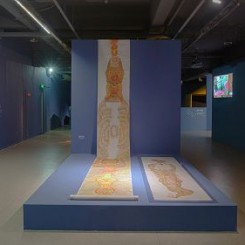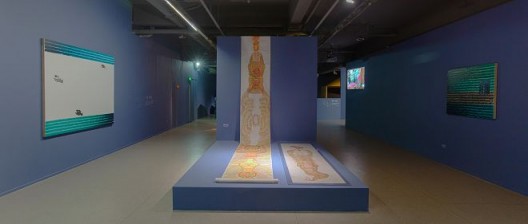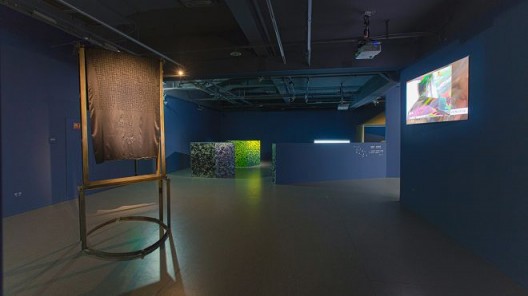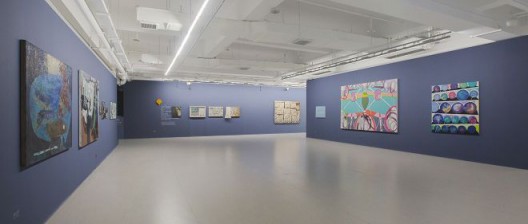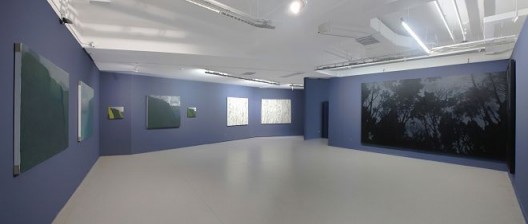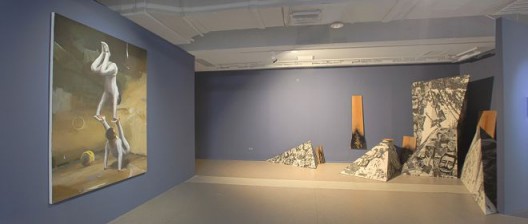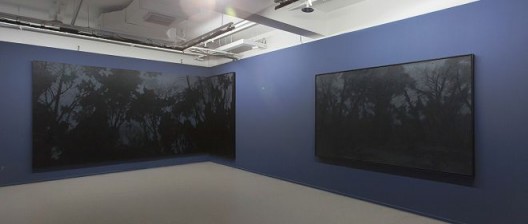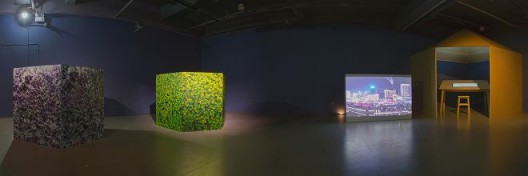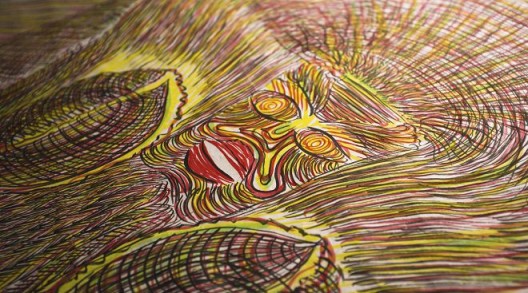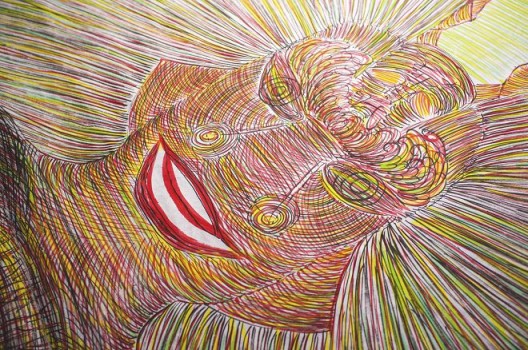[Press Release]
In celebration of its fifth anniversary, for summer 2018 OCAT Xi’an orchestrated a special focus on “Xi’an”, its art, culture, and geography present and past, through a large-scale, expanded presentation of the Xi’an Showcase project. Titled “Mapping the City”, and taking several particular threads of historic development as its narrative, the exhibition brought together sixteen artists, eight being previous participants in Xi’an Showcase projects, and eight a new group of artists, not all of whom live in Xi’an but who each have a connection to the city. The majority of works on display are new piece, the majority special commissions for the show.
Everything has its moment in time, the saying goes. A prescient issue today given the speed at which social media delivers information, the instantaneous viewing and acknowledgement of it, followed by the equally rapid timeframe in which it is filed, dismissed, deleted. Meaning and relevance feels increasingly fleeting; moments in time just that and no more. Still, the idea that actions, events, incidents have weight and bearing for the future is powerful. Where would science, the humanities, history be without its significant moments?
“Mapping the City” is an exhibition about a series of moments in the place we call Xi’an. In terms of the exhibition, these are metaphoric. In terms of fact, these moments relate to extended period of time defined as dynastic reigns. Taking five formations of the city as they emerged in as many eras, these moments describe periods in which efforts were made to evolve, reform and expand the boundaries and the built environment. Understood as a “chapter”, and invoking the sense of a shifting narrative, these historic periods are collapsed in the present moment through the interventions of this group of contemporary artists. The five chapters are “Witchcraft and the Mind”, “Ruins and the Past”, “Landscape and Scenery”, “Stories from the Street” and “Towards the Future? Back to the Past?”. The narrative of each chapter combines historical backgrounds, allegories and textual research on the changes of the city and the expression of the works. Setting “Xi’an” as a framework of great history and culture helps immerse the audience in an imagining of that history. In the face of globalization today, we re-emphasize the importance of local observation, instead of simply processing a visual index. If works lack a substantial dialogue with local culture, regardless of when and where, everything becomes meaningless.
Using the geographical change of the city as its axis, the exhibition unfolds like an historic novel. “Xi’an” is seen not only as a simple regional concept, but one carries all elements of a reality that belongs to the past that is within the present. The geographical change that has occurred in Xi’an is actually a translation of the impact of local history. We take historical relics and review them consistent with the current judgment of history, asking if we can use contemporary art forms to explore historical influences that are impacting the new reality. Can this evoke both the anxiety towards and imagining of the future?
“Mapping the City” involves artists to create a dialogue of specific backgrounds and new ideas, which add an intertextual relation to the city’s geography. “Mapping the City” is curated by Xi’an-based curator Yang Xi.
EXHIBITION HIGHLIGHTS
Guo Fengyi (1942-2010, Xi’an, China) is a self-trained female artist whose artistic practice articulates a particular journey of spiritual and metaphysical significance, belonging to an older generation whose embrace of Chinese folk culture imparts a unique knowledge of history, myth and mystery. Her works on paper are composed of finely controlled brushwork that blend and weave into a composition of lustrous images; suggestions of both human figure and otherworldly beings.
Guo Fengyi began practicing Qigong (a traditional Chinese health maintenance practice that cultivates the qi energy within the body) as a way to alleviate illness. Accompanying her ever-deepening study into the philosophies of mysticism, she began having powerful visions that she felt compelled to give form to through drawing, as a way to adjust the balance between her body and her spiritual world. The subject matter of her works, as well as the concepts and physical structures she uses, comes from traditional Chinese systems of thought; cosmology, acupuncture energy maps, divination, sage kings, geomancy and dynastic grave sites – all of which have become dispensable in a modernizing China. Through her works, Guo Fengyi acts as a convergence point of traditional and contemporary thought, preserving cultural memories hidden deep within Chinese society. Through the physical act of drawing, Guo Fengyi charges the events of today’s world with a profound significance, both as an act of creativity as well as an act of everyday life.
Guo Fengyi’s first foray into the contemporary art world was her participation in the 2002 Long March Project – A Walking Visual Display, in which she produced site specific works at Lugu Lake, Yunnan Province, China, and collaborated with American artist Judy Chicago.
Sichong Xie’s practice deals with issues of identity, politics, cross-culturalism, and the surreal characteristics of her body in the ever-changing environment. Her current body of work features the urgent tendency of diversifying relationship structures in China. Her piece TITLE is a brilliantly conceived visual description of the biographical story of her family, told through the direct experiences of her grandmother’s memories of events. Sichong Xie was born in Xi’an, where the narrative of her story takes place. She now lives and works in Los Angeles.
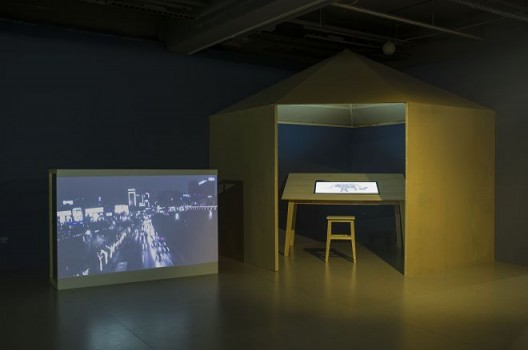
谢思冲,《驴知否》,装置,尺寸可变,2017
Xie Sichong, Do Donkeys Know Politics, video installation, variable size, 2017
Guo Haiqiang
“Guo Haiqiang projects through is work a natural style native to the northwest. He has a most direct way of working, by sketching en plein air in the mountain range close by Xi’an that represents China’s north-south divide. He delights in the nuances of the landscape under various conditions of daylight and weather. His paintings focus on colour and shape, achieving an authentic cohesion of atmosphere and place, of traditional methods and contemporary attitudes intertwined. In short they extract the very essence of what he sees.”…. Painter Xue Feng.
Hu Yun
In recent years, Hu Yun has delved into different kinds of subject matter, intertwining historical narratives with personal experience through a wholly interdisciplinary approach. Within this approach, the focal point of display is often a body of archival materials, as was the case with Hu Yun’s first work for Xi’an Showcase, We’ve Been Here Before, which told the story of his grandfather, and a journey through the Shaanxi region. Objects also play a central role; here, a contemporary interpretation of the rubbings taken from the historic stone tablets at the Beilin Museum in Xi’an, presented as an embroidery of exquisite skill. Yet, in being of black silk thread on black silk background, acquires the aura of a magical incantation, with attending sense of dark arts.
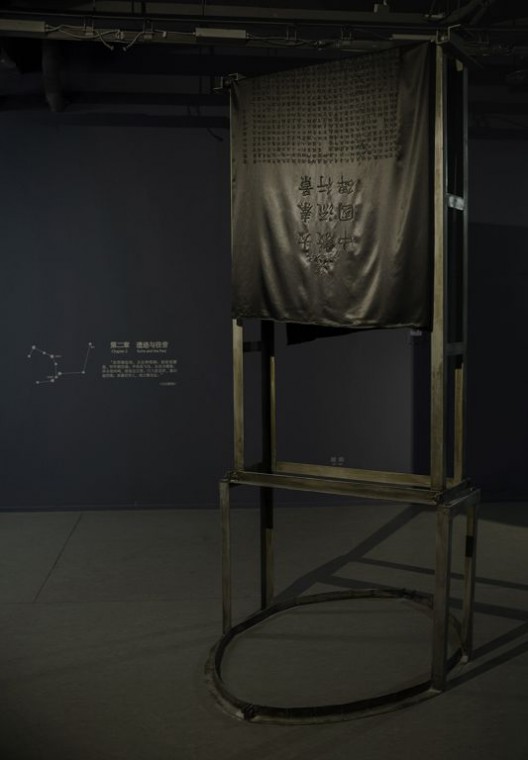
胡昀,《收件人不详》,装置,手工真丝刺绣、金属支架,尺寸可变,2016-2018
Hu Yun, address unknown, installation, handmade silk embroidery, metal structure, variable sizes, 2016-2018
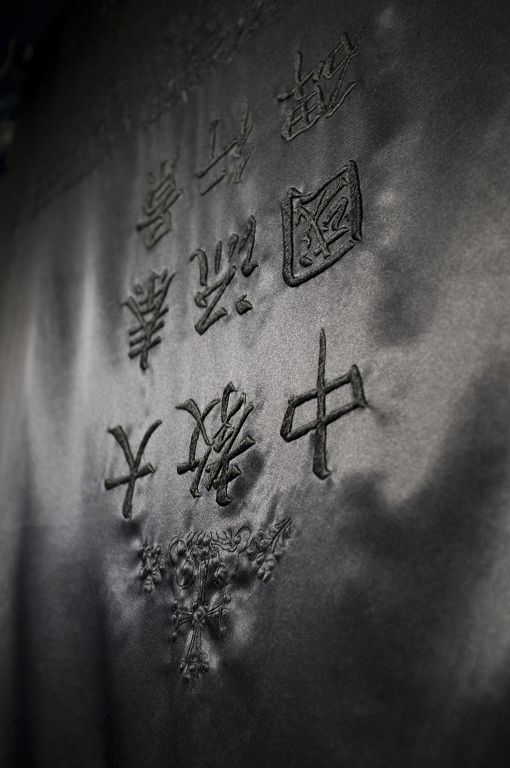
胡昀,《收件人不详》,装置,手工真丝刺绣、金属支架,尺寸可变,2016-2018
Hu Yun, address unknown, installation, handmade silk embroidery, metal structure, variable sizes, 2016-2018
He Tianqi
The work of Xi’an-based graffiti artist He Tianqi represents the aura of urbanism that pervades the present era. Pure colour and form allude to the ideals that underscore recent drives to redevelop sections of the city; the will to a clear bright future. Where other random forms and textures interrupt the works, their purpose is to reveal how ideals are undermined by clumsy interpretations of modernity, and how naïve approaches to planning inevitably engender awkward unforeseen bi-products.

潘剑,《天空2015-1》,布面油画,225x530cm(225×400+225×130),2015
Pan Jian, Sky 2015-1, oil on canvas, 225x530cm(225×400+225×130), 2015
